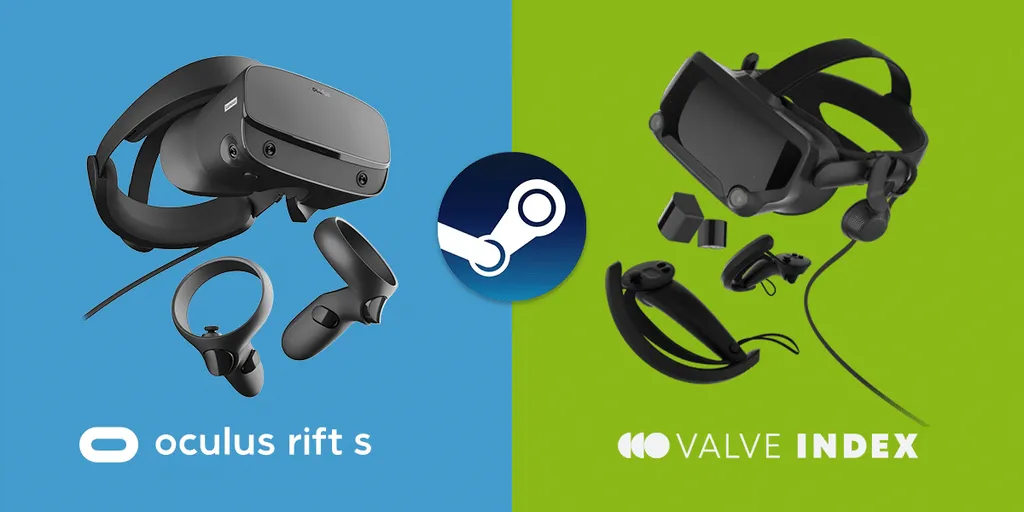In April, the percentage of Steam users with a VR headset increased from 1.29% to 1.91%, likely thanks to the success of Valve’s Half-Life: Alyx.
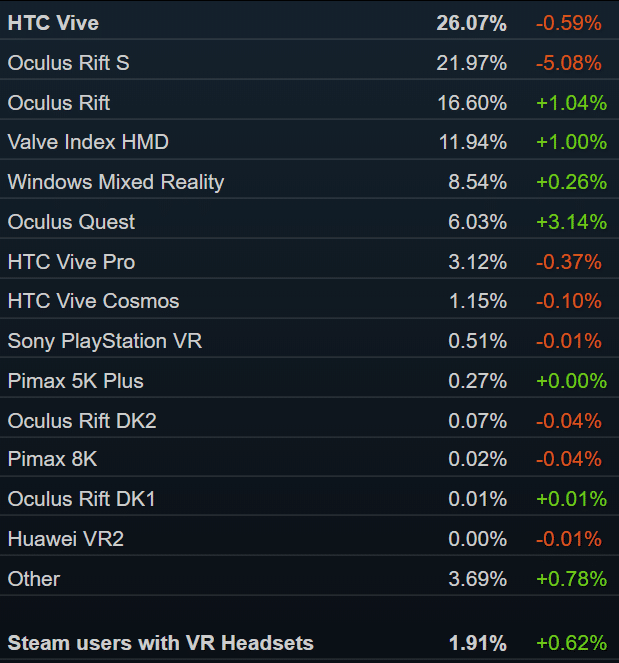
That’s an increase of roughly 50%- relatively enormous growth. Last month, Valve changed the way Steam reports VR users. That means March and April’s data cannot be meaningfully compared to anything in the past.
1.91% may not sound like a lot. But comparing it to other currently niche items on the Hardware Survey shows PC VR is off to a great start already.
In fact, if the current trend keeps up, within two months we expect more Steam users will use a VR headset than a 4K primary monitor.
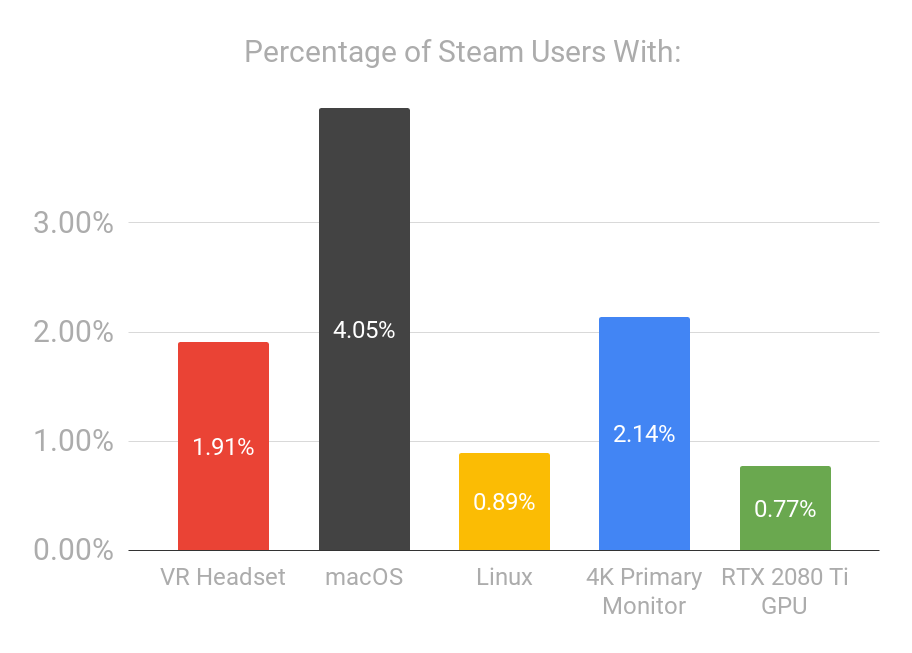
In April 2019, Valve reported Steam reaching 90 million monthly active users. If we assume that figure has now grown to roughly 100 million, we can estimate the number of Steam users with a VR headset as roughly 2 million.
VR Headsets On Steam
Using the April Hardware Survey data and the estimate of 100 million Steam active users, we can arrive at what should be a decent estimate for how many of each specific headset are in use.
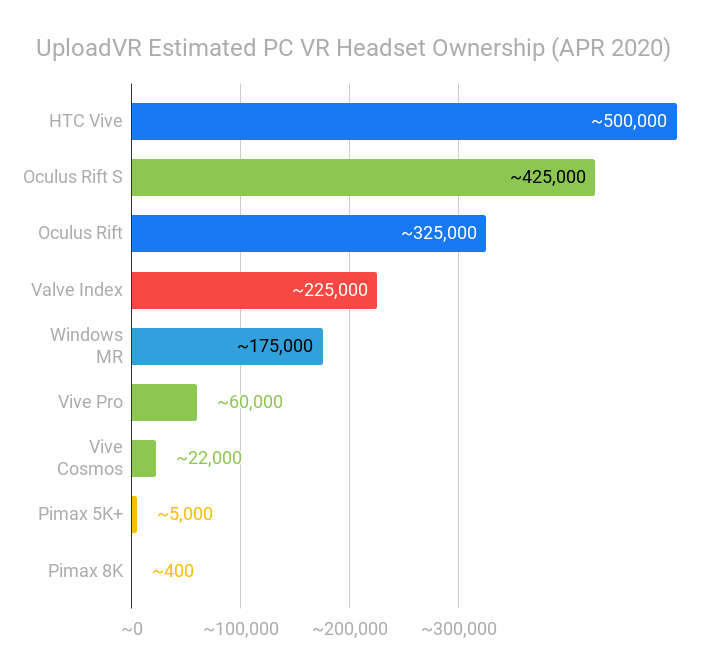
For newer headsets, this number should be somewhat close to how many were sold. Older headsets are more likely to be in storage or inoperable.
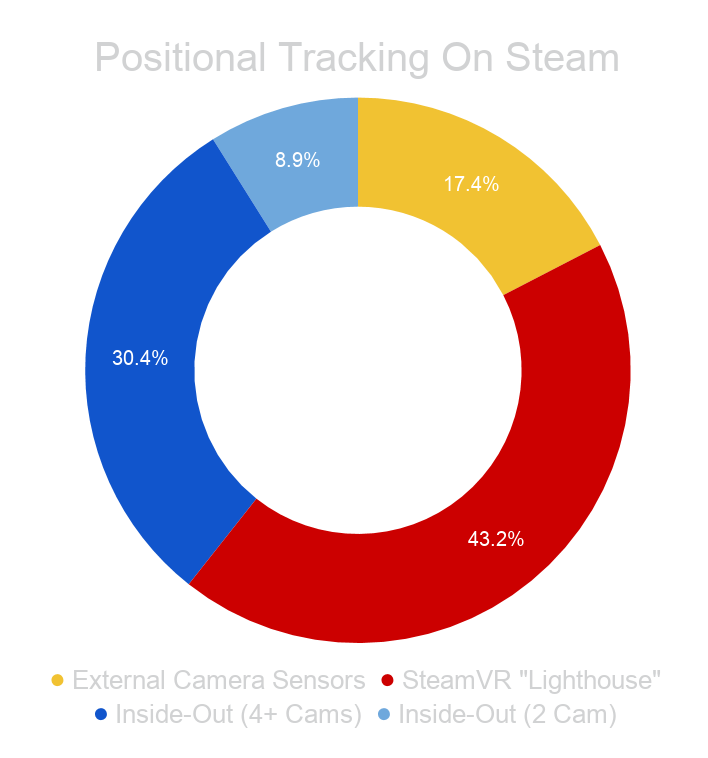
Inside-out tracking has enabled lower-cost headsets and easier setup, accounting for the majority of VR headset growth since May 2019 thanks to the Rift S. However, 6 in 10 headsets on Steam are still tracked with external hardware thanks to the huge numbers of Oculus Rift and HTC Vives still in use.
Oculus Quest Surge
The Oculus Quest is a standalone headset. It was designed to bring room scale VR to people who don’t own a gaming PC. That said, Quest can also be used as a PC VR headset, officially via a USB 3.0 cable, or wirelessly through the paid app Virtual Desktop’s SideQuest patch.
Because of how these methods work, Quest only started showing up in the Steam Hardware Survey in the March data, at which time it represented 2.89%. That has now increased to 6.03%, the largest percentage growth we’ve seen any specific headset make yet.
While the vast majority of Quest owners clearly still don’t own a gaming PC, social distancing and household isolation may be driving PC sales significantly as consumers spend more time inside alone. Quest stock starting to return could also be a significant contributor to this growth.
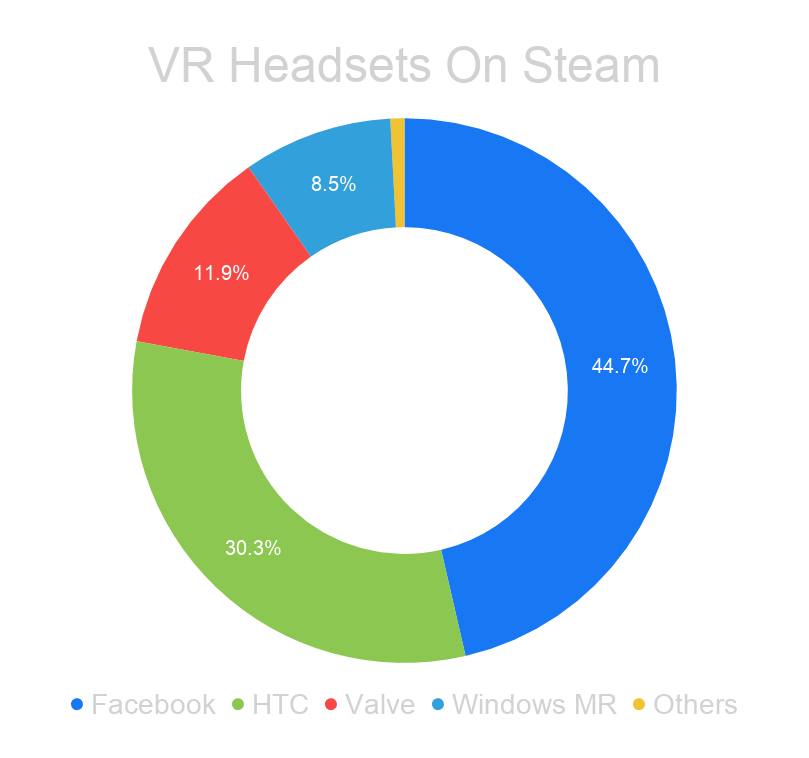
There is another possible explanation however. Inexplicitly, the Oculus Rift S dropped from 27% to 22%, formerly being the most popular headset but now losing out to HTC’s original Vive from 2016. It may be possible that Valve corrected an issue that was causing some Quests to be detected as Rift S.
While the Steam Hardware Survey is by far the most reliable indicator of the size and makeup of the PC VR market, there are still multiple ways to interpret the data. We’ll keep a close eye throughout this year to track how PC VR grows.

